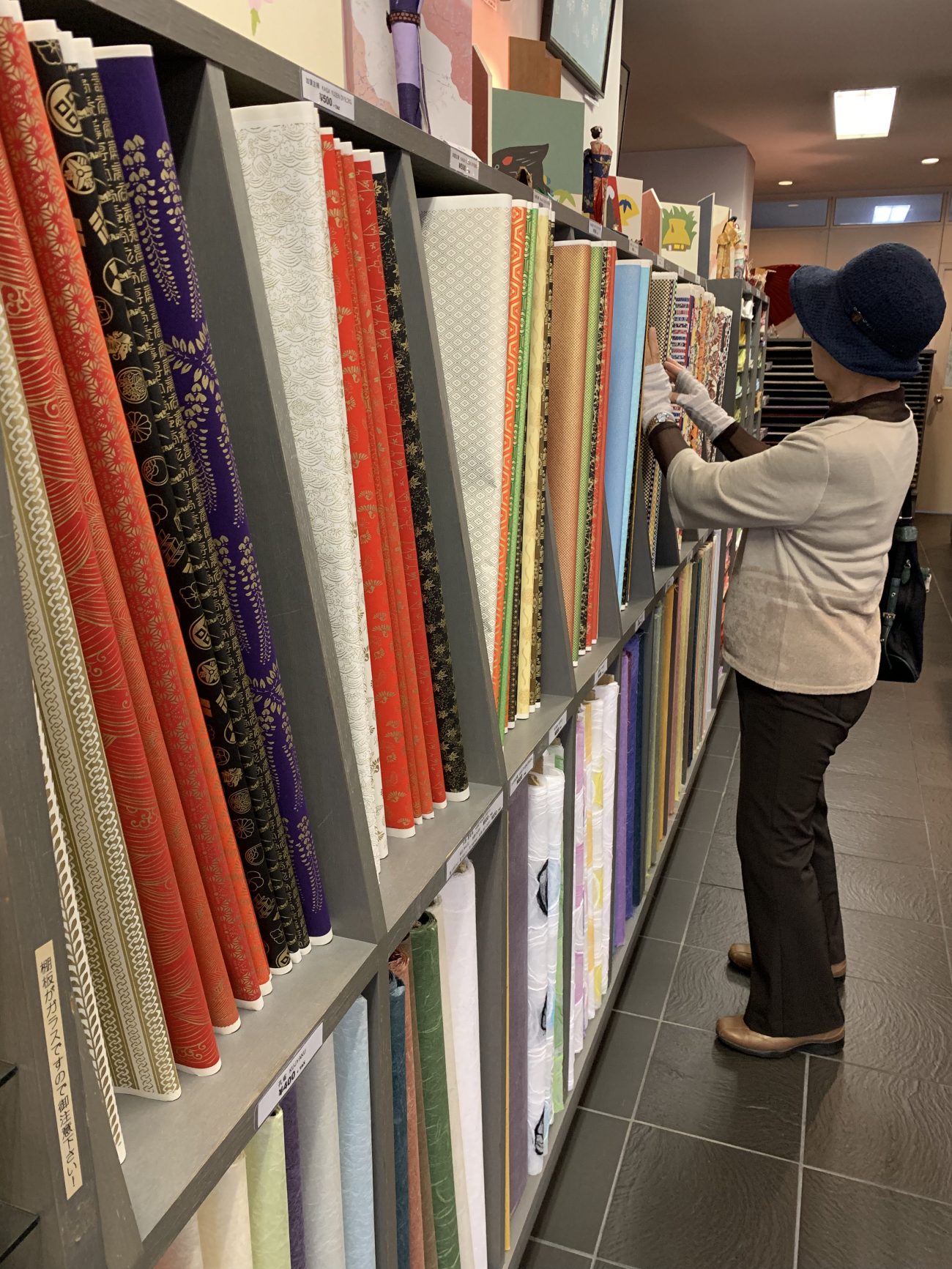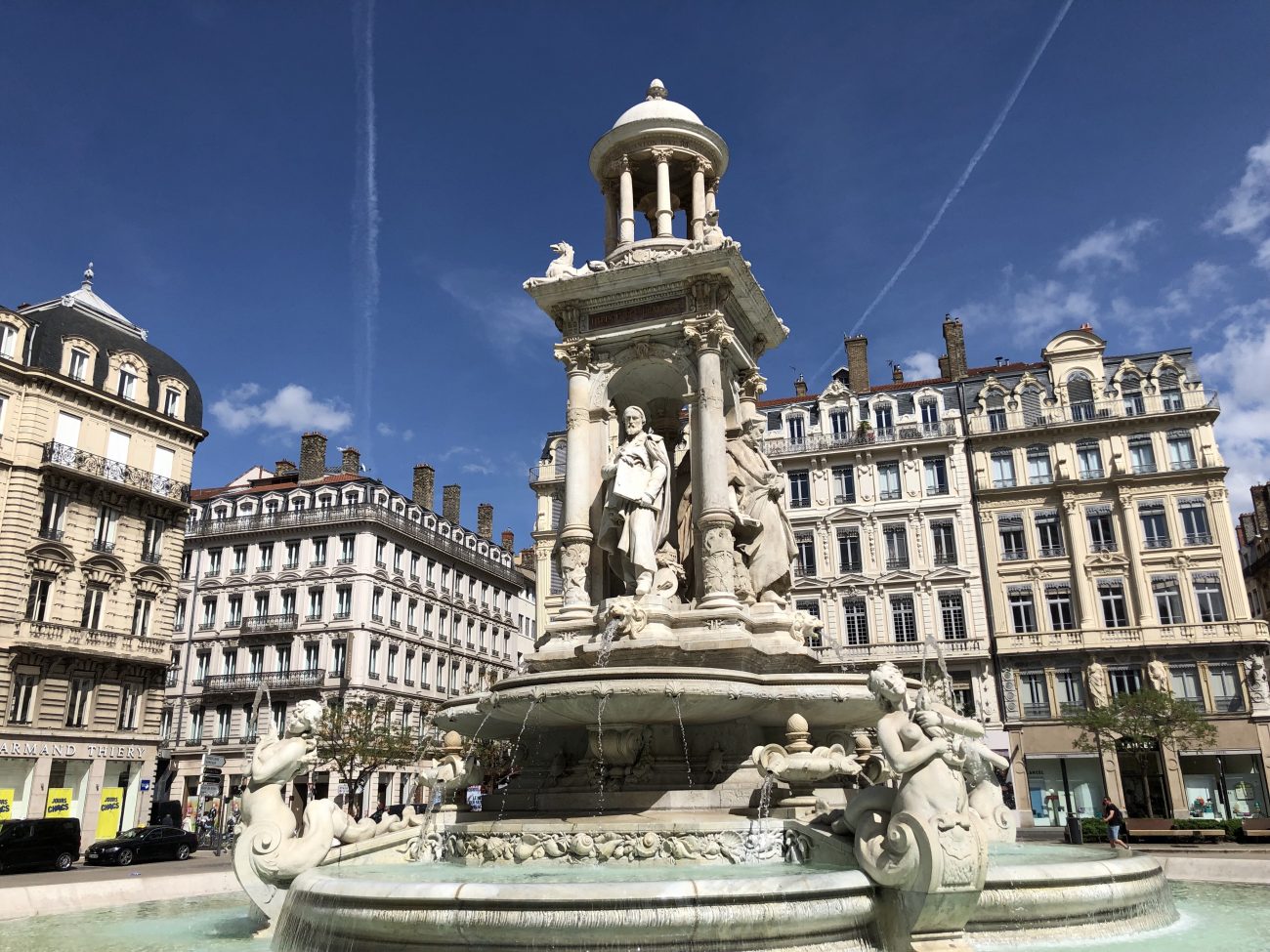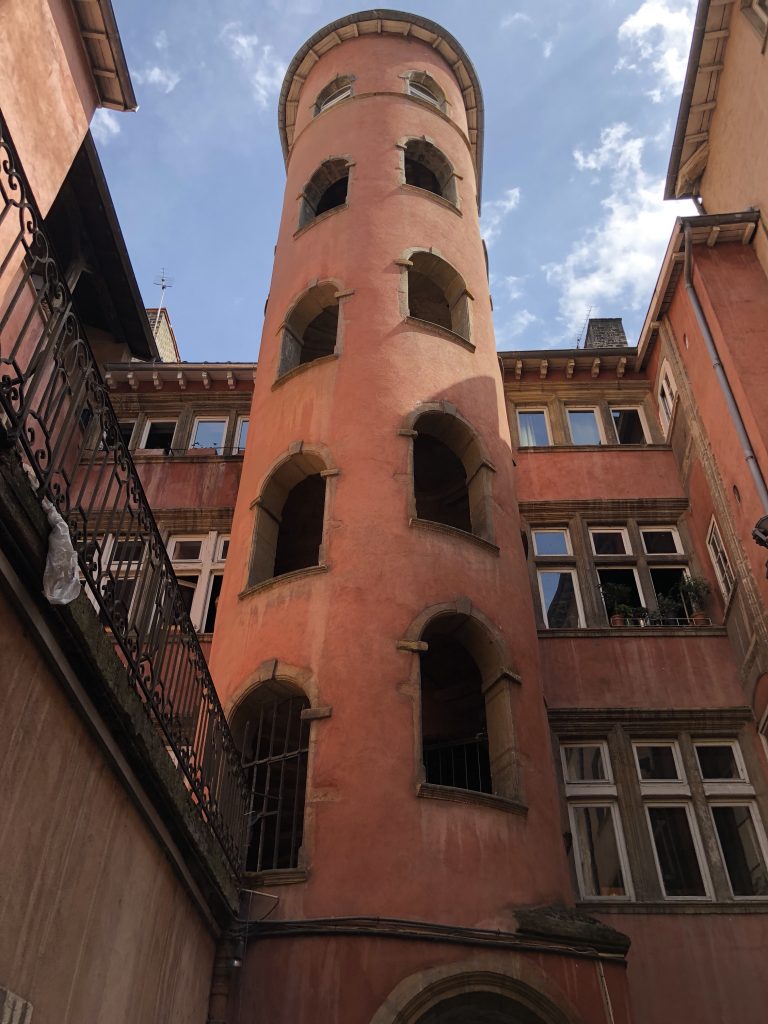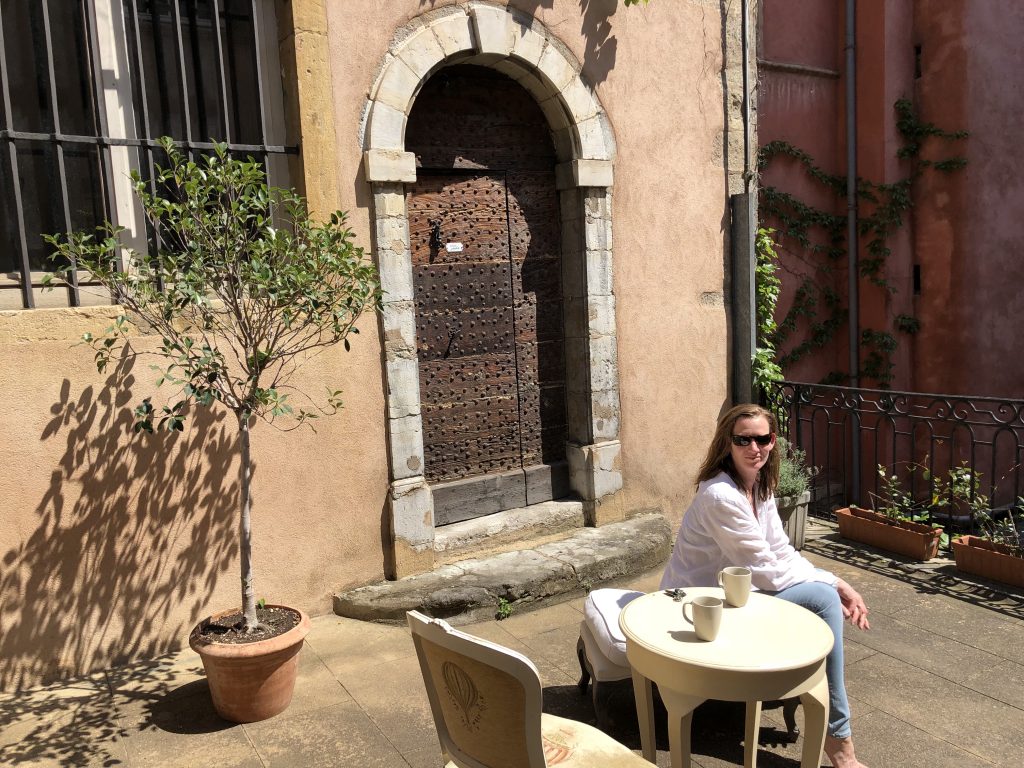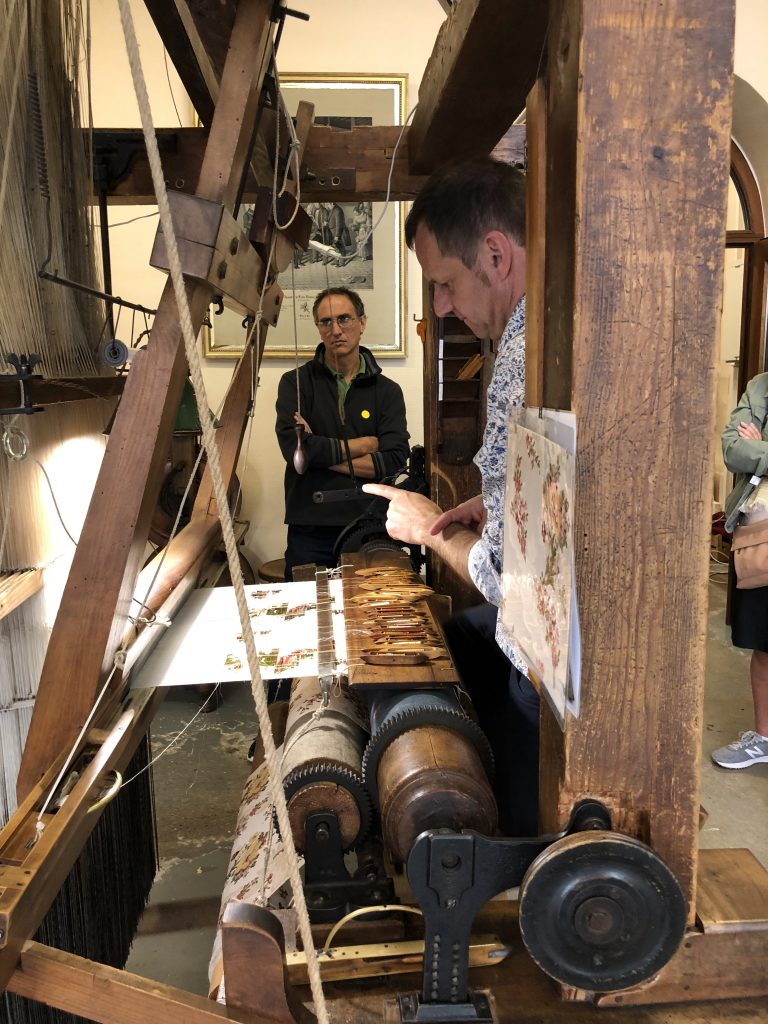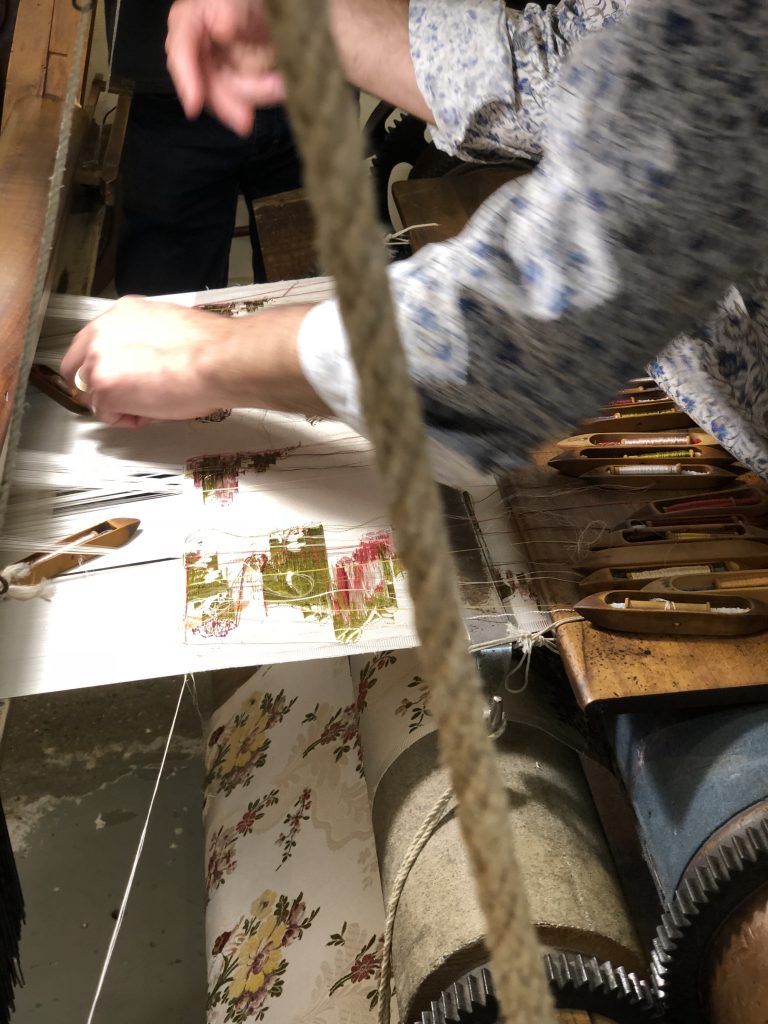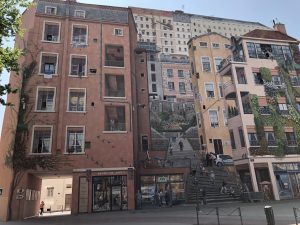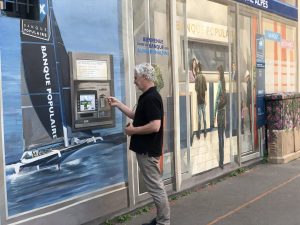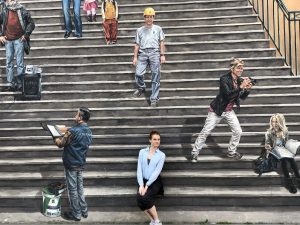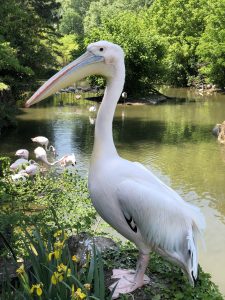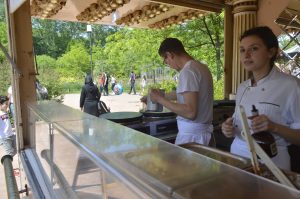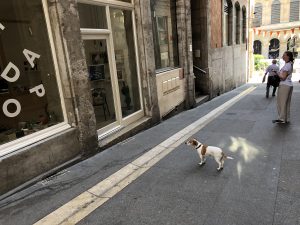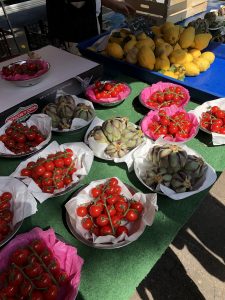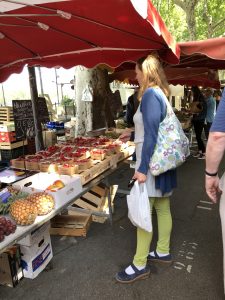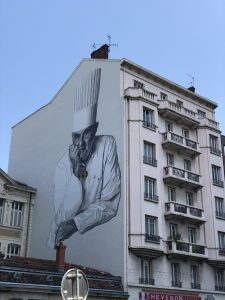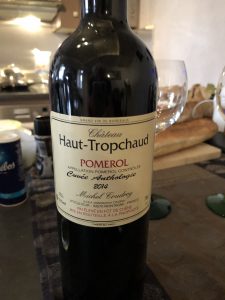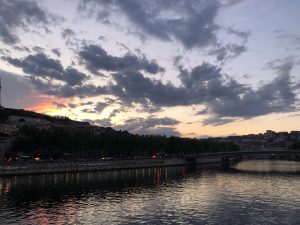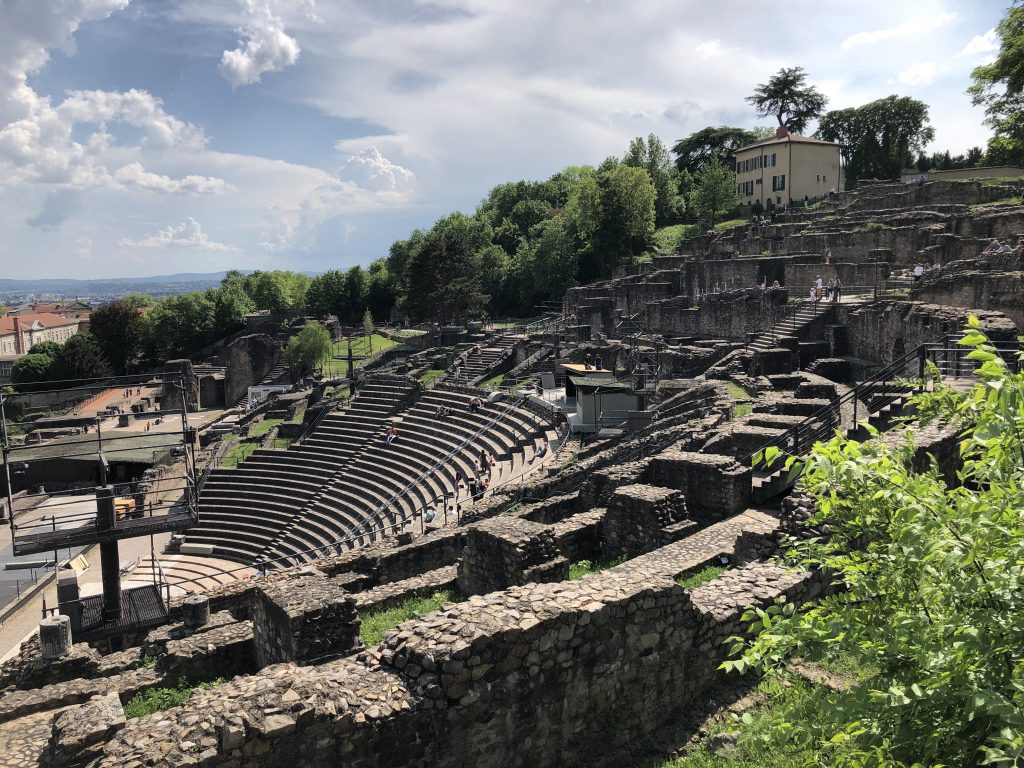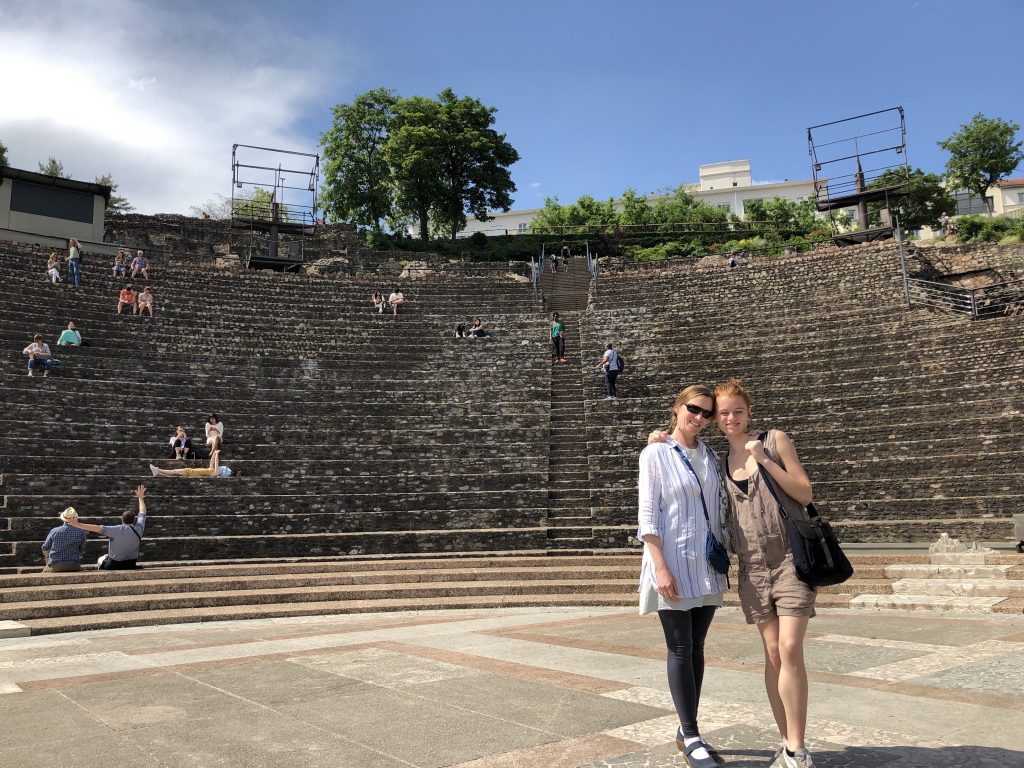With one of us educated in fiber arts and experienced in papermaking, knitting, clothes design, weaving and sewing (hint, it’s not Gary), we’re always on the look-out for local fibers. In Kyoto, that means silk, Washi (handmade paper), ancient dyeing techniques and much more, all of which were on our itinerary.
Washi – Handmade Japanese Paper
We didn’t waste any time. After our day-one-visit to Kiyomizu-Dera Temple, we headed to Downtown Kyoto to Morita Washi, which specializes in washi, or Japanese handmade paper. While you can find washi at specialty stores in the US, this store had a much broader, more beautiful selection than anything we had ever seen.

They had all the expected paper-made products, from notebooks to origami, but what was most impressive were the massive sheets stored like bolts of fabric, each unique. There were drawers of paper, specialty paper behind glass and small sheets. Washi could be found with solid colors, natural and vibrant, or with intricate patterns and art, some was printed or painted on. The paper itself could be made from wood, cotton, silk, rice and mulberry.
It was easy to get lost in Morita Washi for a couple hours and walk out with a few purchases. Our only regret was we didn’t have more shipped home.
Getting there: From Gion, it is a straight shot east across the bridge and into Downtown Kyoto, about a 20-minute walk. There are a few small turns, so we just entered 298, Ogisakayacho, Shimogyo-Ku in the GPS to get us there.
Nishijin Textile Center
Kyoto is known for its kyo-yuzen textiles and silk dyeing, and since the 15th century, its weavers have been centered in a textiles area known as Nishijin in Northwest Kyoto. This is the same area as the Golden Pavilion and Ryoan-Ji, and Nishijin was a perfect stop after visiting those sights.
Here you find both the Nishijin Textile Center and the Orinasu-kan Museum. We heard the museum was a better way to learn about Kyoto’s textile history, but it is closed on Monday (Always good to check these things in advance. Other than the major temples and shrines, many places in Kyoto are closed one day a week). We toured Nishijin Textile Center, which was more touristy, but still a nice experience, viewing displays on each of the three floors and shopping on the second floor.
We stayed for the Kimono fashion show, which runs nearly every hour, a thoroughly enjoyable experience (especially after walking all day). The kimonos were beautiful, each showing different styles and colors.
Getting There: We’d like to be more precise, but we came from Ryoan-Ji and got on the wrong bus, switched and then got off at the wrong stop. It happens. But we heard that bus 9 is the best route. It’s also close to Nijo-jo Castle, so combining the two sights is smart plan.
Sashiko Stitching
Reusing textiles has a long tradition in Japan for economic and spiritual reasons, and sashiko stitching is a wonderful example. Sashiko combines country style with intricate designs, all made with a simple running stitch that makes cloth stronger. It evolved in the Edo era as winter work in northern farming communities where hand sewing was essential. It offered warmth and thrifty recycling, and strengthened work clothes and household goods.
At a time when laws prevented lower classes from wearing bright colors, Sashiko stitching used indigo and white colors, with stripes no thicker than a straw and patterns no bigger than a grain of rice. Not only did these colors give Sashiko a strong tonal contrast, but the indigo dye strengthened fibers, and the residual scent of fermented indigo and ammonia in the dye was believed to repel snakes and insects
By the 1950s, Sashiko had declined, but the stitching was preserved and can now be found in museums as an example of folk art. We didn’t find Sashiko in Kyoto, but later we found an example was hanging in a restaurant in Koyasan, and then in the southern Kii peninsula along the Kumano-Kodo, with a more modern example on a dress worn by a charming Japanese woman who was happy to model for us.
Up Next: The Coffee Shops of Kyoto
Our last five days were in Lyon and we stayed in Cote Jardin, just down the street from our first apartment, but this one was something special. One of the Lyon Renaissance apartments, it was roomy by French standards with two bathrooms, a second floor loft for the bed and bar seating for the kitchenette.
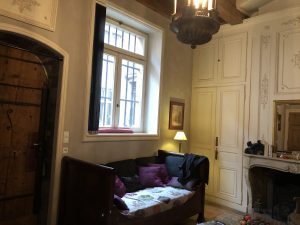
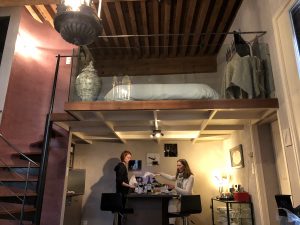
It opened into a courtyard with the 16th century rose tower rising in front of us (usually filled with tourists during the day). Entry was through a traboule on Rue de Boeuf, a small street where 300 silk looms operated in the 18th century. Climbing one set of stairs took us to a small courtyard outside our door where we could enjoy a coffee or glass of wine.
Speaking of the silk trade, Lyon was the last stop on the Silk Road and by 1744, 60,000 of the 100,000 people in Lyon were employed in the silk trade. We learned about this on Saturday when we made our way to the silk museum for a tour and demonstration. If necessary, you can schedule one in English. It’s located in a neighborhood where 40,000 looms once produced fabric. One was still in operation and we saw the process — more than 7,000 silk threads were used to create beautiful fabrics at a pace of about a meter a day. While many of those weavers lost their head in the French Revolution, Napoleon Bonaparte’s thirst for silk revitalized the industry, which continues to thrive today.
A walk through the surrounding neighborhood brought us to a giant fresco, which Phyllicia said was the largest of its kind in Europe.
The weather stayed warm and sunny throughout our stay so a walk across the Rhone to the park and free zoo was in order, topped off by crepes (Phyllicia got the homemade Nutella, Debbie chocolate and me the Grand Marnier).
The days got lazier, the food was spectacular from start to finish, the region’s wines were a delight and we frequented the open market across the Saône to cook a couple dinners and enjoy the Saint-Emilion and Pomerol we brought back with us. We visited Phyllicia at work where she teaches English to Lyon professionals, a site next door to Halles de Lyon-Paul Bocuse, an indoor market where we enjoyed lunch.
The last day was a tour of the Roman amphitheater, built after Lyon became a colony of the Roman Empire called Lugdunum in 47 BCE.
What can you say about Lyon, a beautiful, manageable city that is so close to Provence. We came to visit Phyllicia and though that was the highlight for us, we also fell in love with the city.

